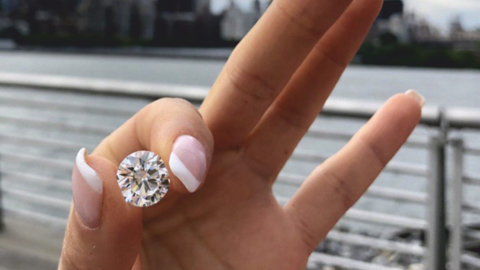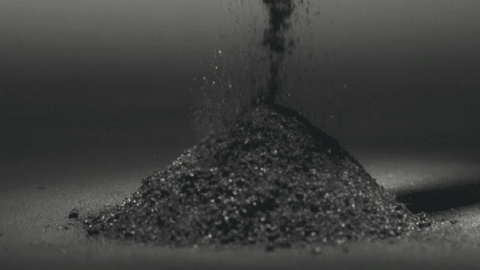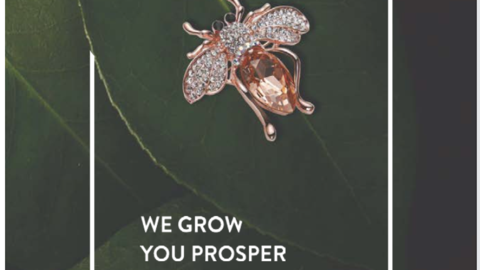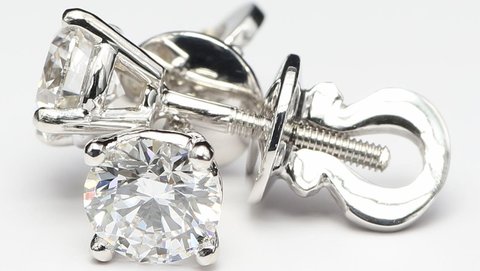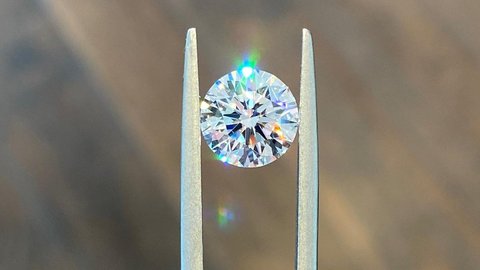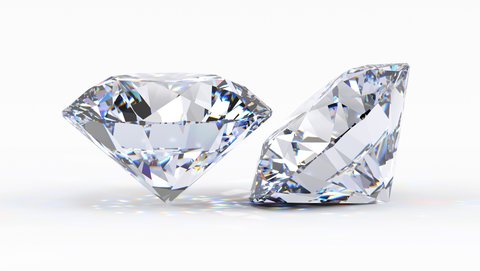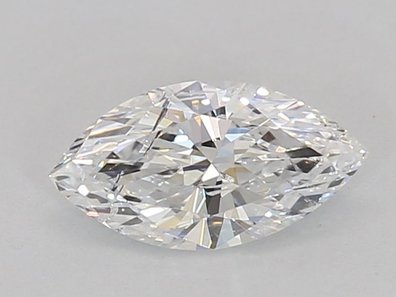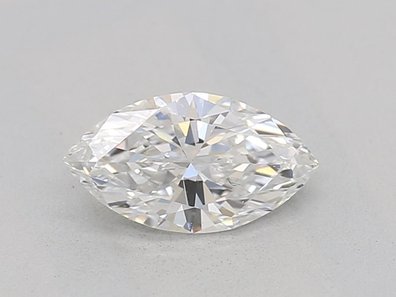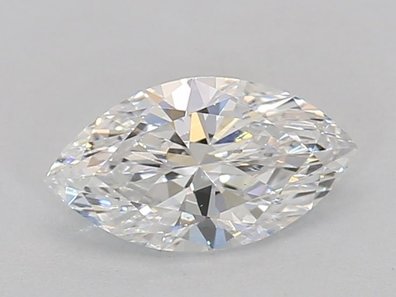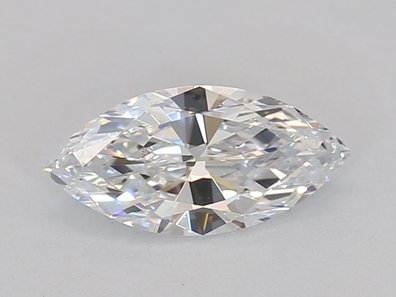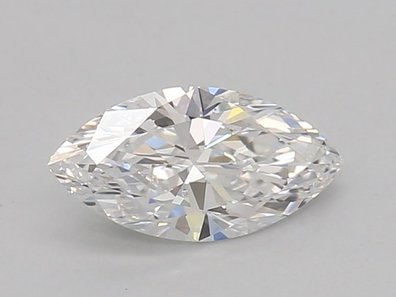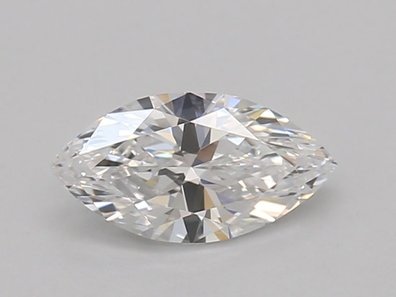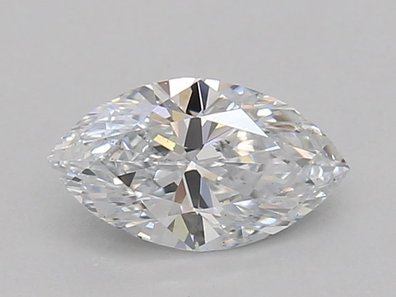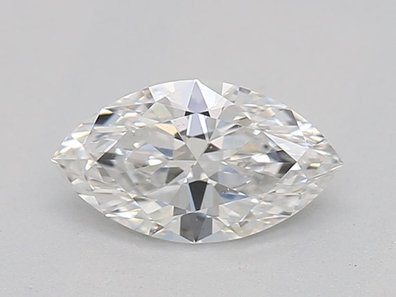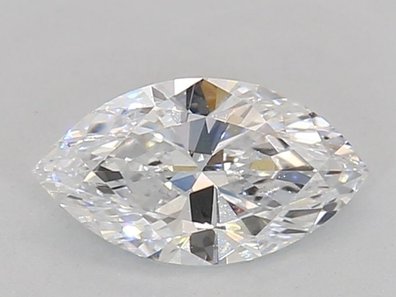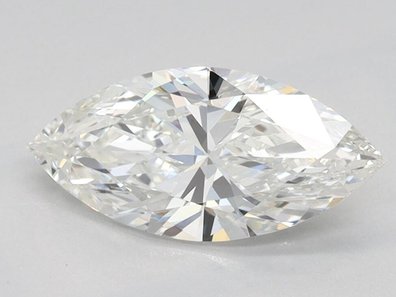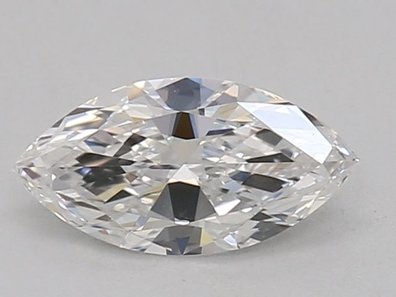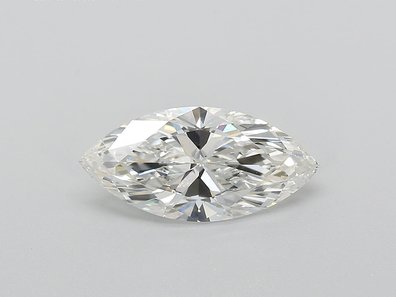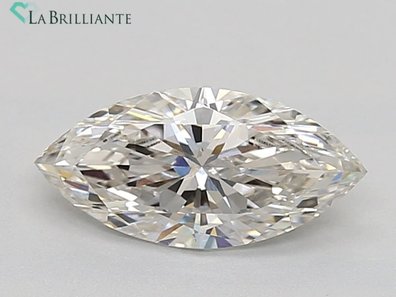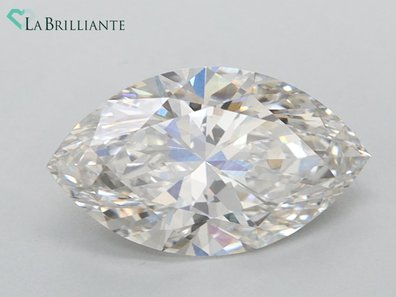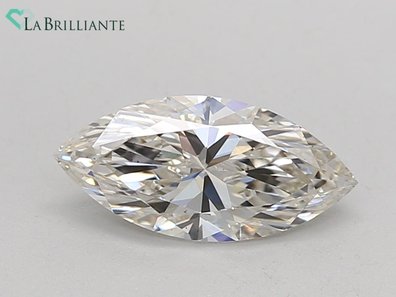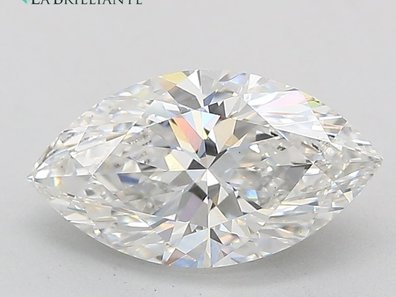Marquise Cut Lab Grown Diamonds
Marquise cut lab-grown diamonds are shaped like a boat with pointed ends, they have a large open table, and a symmetrical shape, with typically 56 facets. These facets are cut and polished to reflect light and create a mesmerizing sparkle. The shape and angle of each facet is precisely calculated to enhance the diamond's brilliance, fire, and scintillation.
The length-to-width ratio is also an important factor in determining the overall appearance of the diamond, with an ideal ratio of 1.75 to 2.25, ensuring a symmetrical shape. At LaBrilliante, our cutting and polishing techniques are of the highest standards, resulting in Marquise cut lab-created diamonds that shine and sparkle at their fullest potential.
Explore our Marquise Cut Diamond Buying Guide
Need a Particular Lab-Grown Diamond?
Please describe your requirement in the form below and we will contact you within 24 hours with the best available options.
Get Access to Our Lab Diamond Database
Find Out About Prices and Availability Information
Some of Our Marquise Lab-Grown Diamonds
Are you a diamond buyer?
Please sign in on our website, and we will grant you access to over 100,000 lab-grown diamonds in our stock.
Marquise Cut Diamond Proportions
| SIZE | CARAT WEIGHT | SIZE | CARAT WEIGHT | SIZE | CARAT WEIGHT |
| 3x1.5 mm | 0.025 ct. | 7x3 mm | 0.30 ct. | 14x7 mm | 2.50 ct. |
| 3.5x1.75 mm | 0.065 ct. | 7.5x3.5 mm | 0.33 ct. | 15x7 mm | 3.00 ct. |
| 3.5x2 mm | 0.07 ct. | 7x4 mm | 0.34 ct. | 14x8 mm | 3.00 ct. |
| 4x2 mm | 0.10 ct. | 8x4 mm | 0.50 ct. | 15x7.5 mm | 3.25 ct. |
| 3.75x1.75 mm | 0.11 ct. | 8.75x4.25 mm | 0.70 ct. | 15x8 mm | 3.44 ct. |
| 4.25x2.25 mm | 0.12 ct. | 9x4.5 mm | 0.75 ct. | 16x8 mm | 3.86 ct. |
| 5x2.5 mm | 0.14 ct. | 9.5x4.7 mm | 0.85 ct. | 16.5x8.25 mm | 4.00 ct. |
| 5.5x2/75 mm | 0.16 ct. | 10x5 mm | 1.00 ct. | 17x8.5 mm | 4.88 ct. |
| 5.5x3 mm | 0.18 ct. | 11x5.5 mm | 1.25 ct. | 17.5x10 mm | 5.50 ct. |
| 5x3 mm | 0.20 ct. | 11.5x6 mm | 1.33 ct. | 20x8 mm | 7.08 ct. |
| 6.5x3 mm | 0.23 ct. | 12x6 mm | 1.50 ct. | 20x10 mm | 7.94 ct. |
| 6x3 mm | 0.25 ct. | 13x6.5 mm | 2.00 ct. | 20x11 mm | 9.50 ct. |
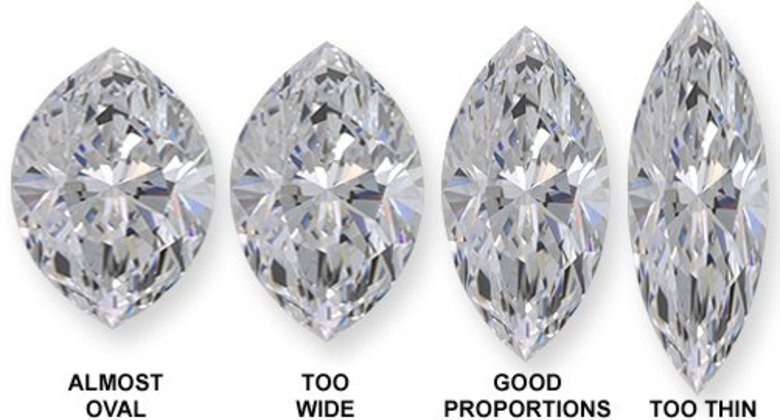
What Factors Should Be Considered When Selecting Marquise Lab-Grown Diamonds?
Gemological institutes don't often assess the cut quality of fancy-shaped diamonds, but for marquise lab diamonds, proportions are incredibly important. It's crucial to carefully examine them when selecting a gemstone because two diamonds with the same weight and shape can appear completely different depending on their ratios.
If there are no visible imperfections, opting for an SI clarity grade can be a cost-effective choice to avoid unnecessary expenses.
Due to its brilliant appearance, a marquise lab-grown diamond may show a yellowish tint. Therefore, it's not advisable to choose a lab diamond with a color grade lower than G. However, a G-graded lab-created diamond can look just as stunning as one with an E color, as long as the color is well-balanced with the clarity.
Technical Aspects of Marquise Cut Diamonds
The history of the marquise cut diamond dates back to the 18th century, when it is said to have been created by King Louis XV of France. The story goes that the King commissioned a diamond cutter to create a shape that resembled the mouth of his mistress, Madame de Pompadour, whom he referred to as his "marquise." The result was a diamond cut with pointed ends and a curved center, which came to be known as the "marquise cut."
One interesting fact about the marquise cut is that it has the highest crown surface area of all diamond cuts, meaning that it can appear larger than other diamonds of the same carat weight. Additionally, the elongated shape of the marquise cut can make fingers appear longer and more slender.
In terms of technical details, the marquise cut diamond typically has 33 facets on the crown and 25 on the pavilion. This design allows for maximum light reflection and sparkle. However, due to its pointed ends, the marquise cut can also be more prone to chipping and breakage if not handled carefully.
Another technical aspect is that the marquise diamond is the most challenging diamond to cut, since it requires a high level of symmetry and precision in the cutting process. Even small variations in the angles of the facets can greatly affect the diamond's overall appearance and value.
LaBrilliante’s marquise cut lab-created diamonds are cut with expert craftsmanship and are designed to maximize the brilliance and sparkle of each diamond. We are committed to providing customers with the best quality lab diamonds on the market.
How to Buy Marquise Lab Diamonds Wholesale?
For a hassle-free experience in procuring wholesale lab-grown diamonds, turn to Labrilliante. You have the option to either submit an application on our website or directly contact us through the provided phone number. Our dedicated team is available to guide you in selecting the ideal marquise diamond that suits your preferences and requirements.
FAQ about Marquise Lab-Grown Diamonds
The elongated shape of marquise diamonds covers more surface area than round or princess cuts of equivalent carat weight. This creates the optical illusion of a larger diamond without the additional cost of higher carat weight. Additionally, when worn as a ring, the marquise shape gives the illusion of slender fingers, making it particularly popular for engagement rings
The bow-tie effect is a dark shadow that appears across the center of a marquise diamond, resembling a bow tie. This occurs due to the way light reflects within the diamond. While all marquise diamonds have some degree of this effect, a well-cut stone will minimize it significantly. When shopping for a marquise diamond, examine it in person or through high-quality images to ensure the bow-tie effect isn't overly prominent
The optimal length-to-width ratio for a marquise diamond typically falls between 1.75 and 2.25. This range ensures the diamond maintains its distinctive elongated appearance while looking balanced and elegant. If the ratio is too low, the diamond may appear too round; if too high, it can look disproportionately stretched
The pointed ends of marquise diamonds are vulnerable to chipping and damage. To protect them, choose settings with prongs that specifically cover and secure these tips. Popular protective settings include solitaire, halo, and three-stone designs with strategic prong placement. Bezel settings can also provide excellent protection while giving a modern look to the marquise shape
Lab-grown marquise diamonds typically cost 20-40% less than their mined counterparts of similar quality. Additionally, marquise diamonds themselves are generally up to 30% cheaper than round brilliant cuts due to lower demand. This combined cost advantage allows you to either save significantly or invest in a larger, higher-quality stone within the same budget. Lab-grown marquise diamonds also offer ethical and environmental benefits while providing identical beauty and durability
Marquise-cut diamonds feature 58 facets that allow light to penetrate and reflect easily, creating exceptional brilliance and sparkle. Their elongated shape with pointed ends combines the most striking attributes of oval and pear-shaped diamonds, making them uniquely brilliant. While all diamond shapes offer sparkle, the marquise cut's facet arrangement is specifically designed to maximize light return, giving it impressive fire and brilliance that rivals even the popular round brilliant cut.
Yes, lab-grown marquise diamonds offer excellent customization options. Because they're more affordable than mined diamonds (typically 20-40% less expensive), you have greater flexibility to choose specific carat sizes, cuts, clarity, and color grades that fit your design vision. At custom jewelers, you can request specific 4Cs specifications, and they'll curate selections from their inventory to match your preferences.Additionally, the distinctive elongated shape of marquise diamonds makes them versatile for creative settings, including east-west orientations, three-stone designs, or as stunning center stones in halo settings
There are several effective methods to clean your lab-grown marquise diamond. For a gentle at-home cleaning, mix mild soap with lukewarm water and soak your diamond jewelry for 1-2 minutes. Then gently scrub around the stone with a soft toothbrush, paying special attention to hard-to-reach areas like underneath the diamond and around the prongs. Rinse thoroughly with cold water and pat dry with a 100% cotton cloth.
For a deeper clean, you can create a solution of one part water with six parts ammonia and soak your marquise diamond ring for 15-20 minutes. Alternatively, you can use specialized diamond cleaning solutions available at jewelry stores, following the product instructions carefully.
Regular cleaning is essential to maintain your lab-grown diamond's brilliance, as dirt, oil, and residue can accumulate over time and diminish its sparkle. Many jewelers also offer professional cleaning services, with some providing complimentary annual cleanings that include inspection for wear and tear.


